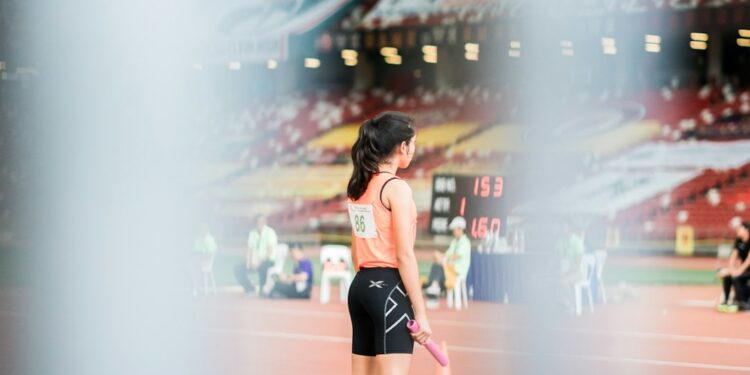Building Explosive Power for Jumping Sports
Explosive power is crucial for athletes who participate in jumping sports such as basketball, volleyball, and track and field. The ability to generate quick and powerful movements is essential for success in these sports, as it allows athletes to jump higher, run faster, and react more quickly to changes on the court or field. In this blog post, we will explore some key exercises and strategies that can help athletes build explosive power and improve their performance in jumping sports.
1. Plyometrics
Plyometric exercises are a fundamental component of any explosive power training program. These exercises involve quick, explosive movements that help to develop fast-twitch muscle fibers and improve overall power output. Some common plyometric exercises for jumping sports include box jumps, squat jumps, and depth jumps.
Box jumps involve jumping onto a sturdy box or platform from a standing position, then quickly jumping back down and repeating the movement. This exercise helps to increase explosive power in the legs and improve vertical jump height. Squat jumps involve jumping as high as possible from a squatting position, then landing softly and repeating the movement. This exercise helps to improve lower body strength and power, which is essential for jumping sports. Depth jumps involve stepping off a box or platform, then immediately jumping up as high as possible upon landing. This exercise helps to improve reactive strength and power, which is crucial for quick and explosive movements on the court or field.
2. Strength Training
Strength training is another important component of building explosive power for jumping sports. By increasing muscle strength and power, athletes can generate more force during explosive movements and improve their overall athletic performance. Some key strength training exercises for jumping sports include squats, deadlifts, and lunges.
Squats are a foundational lower body exercise that targets the quadriceps, hamstrings, and glutes. By performing squats with proper form and progressively increasing the weight, athletes can build strength and power in the legs, which is essential for jumping sports. Deadlifts are another key lower body exercise that targets the hamstrings, glutes, and lower back. By performing deadlifts with proper form and progressively increasing the weight, athletes can improve overall strength and power in the lower body, which is crucial for explosive movements on the court or field. Lunges are a unilateral exercise that targets the quadriceps, hamstrings, and glutes. By performing lunges with proper form and adding weight as needed, athletes can improve strength and power in each leg individually, which is important for maintaining balance and stability during explosive movements.
3. Speed and Agility Training
In addition to plyometrics and strength training, speed and agility training are essential for building explosive power for jumping sports. By improving speed and agility, athletes can react more quickly to changes on the court or field and perform explosive movements with greater efficiency. Some key speed and agility exercises for jumping sports include sprints, shuttle runs, and ladder drills.
Sprints are a fundamental speed training exercise that helps to improve acceleration, top speed, and overall sprinting technique. By performing sprints at varying distances and intensities, athletes can improve their running mechanics and increase their speed on the court or field. Shuttle runs are a popular agility training exercise that involves running back and forth between two points in a timed manner. This exercise helps to improve lateral quickness, change of direction, and overall agility, which is essential for success in jumping sports. Ladder drills are a versatile agility training exercise that involves various footwork patterns and movements through an agility ladder. By performing ladder drills with proper form and speed, athletes can improve their coordination, reflexes, and agility, which is important for executing quick and explosive movements on the court or field.
4. Flexibility and Mobility Training
Flexibility and mobility are often overlooked aspects of building explosive power for jumping sports, but they are essential for preventing injuries and improving overall athletic performance. By maintaining good flexibility and mobility in the joints and muscles, athletes can move more freely and efficiently during explosive movements. Some key flexibility and mobility exercises for jumping sports include dynamic stretching, foam rolling, and yoga.
Dynamic stretching involves moving the muscles and joints through a full range of motion in a controlled manner. By performing dynamic stretches before a workout or competition, athletes can improve flexibility, mobility, and blood flow to the muscles, which can help to prevent injuries and improve performance. Foam rolling is a self-myofascial release technique that involves using a foam roller to massage and release tight muscles and fascia. By incorporating foam rolling into a regular recovery routine, athletes can improve muscle recovery, reduce soreness, and improve flexibility and mobility in the muscles. Yoga is a mind-body practice that involves holding various poses and stretches to improve flexibility, strength, and balance. By incorporating yoga into a regular training routine, athletes can improve overall flexibility, mobility, and body awareness, which can help to prevent injuries and improve performance in jumping sports.
In conclusion, building explosive power for jumping sports is essential for success on the court or field. By incorporating plyometrics, strength training, speed and agility training, flexibility and mobility training, athletes can improve their overall athletic performance and maximize their potential in jumping sports. By following a structured and progressive training program that addresses all aspects of explosive power development, athletes can build the strength, power, speed, and agility they need to excel in jumping sports. With dedication, hard work, and consistency, athletes can achieve their goals and take their performance to the next level in jumping sports.















